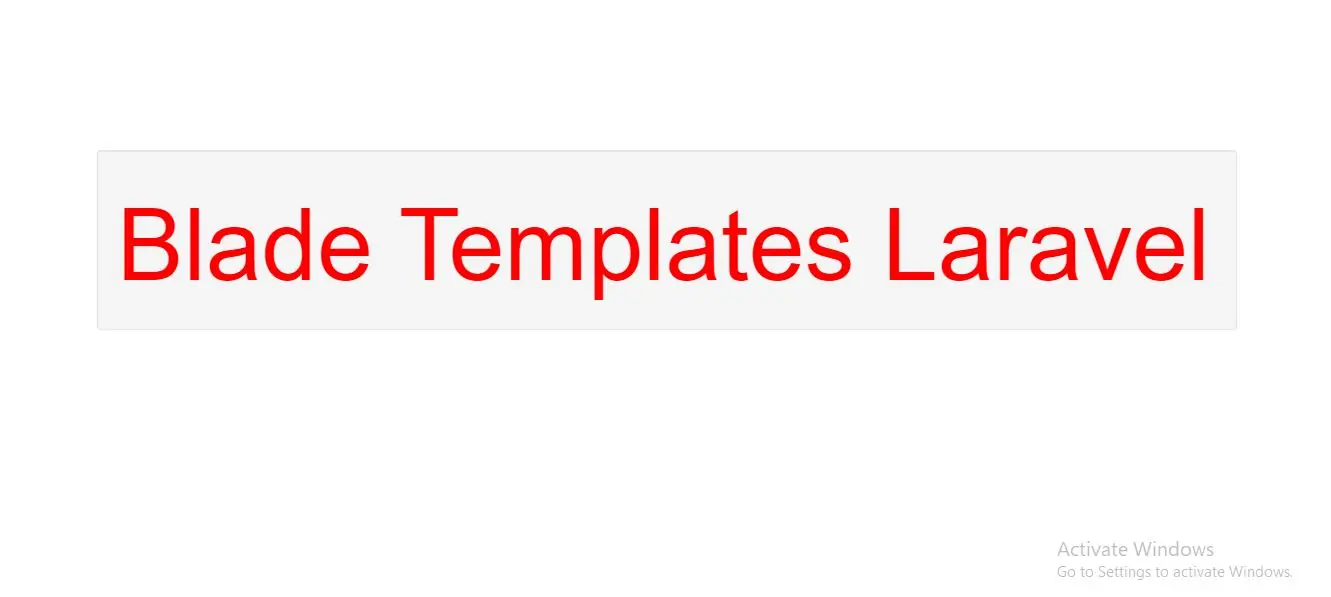
1.Template Inheritance
Defining A Layout
Two benefits of using Blade are template inheritance and sections. For Example(1)
<!-- Stored in resources/views/app.blade.php -->
<html>
<head>
<title>App Name - @yield('title')</title>
</head>
<body>
@section('sidebar')
This is the main page
@show
<div class="container">
@yield('content')
</div>
</body>
</html>
As above example, this file contains typical HTML mark-up. However, take note of the @section and @yield directives. The @section directive, as the name implies, defines a section of content, while the @yield directive is used to display the contents of a given section.
Extending A Layout
When defining a submain view, use the Blade @extends directive to specify which layout the child view should "inherit". Views which extend a Blade layout may inject content into the layout's sections using @section directives. Remember, as seen in the example above, the contents of these sections will be displayed in the layout using @yield:
<!-- Stored in resources/views/submain.blade.php -->
@extends('layouts.app')
@section('title', 'Page Title')
@section('sidebar')
@parent
<p>This is appended to the main sidebar.</p>
@endsection
@section('content')
<p>This is my body content.</p>
@endsection
In this example, the sidebar section is utilizing the @parent directive to append content to the layout's sidebar. The @parent directive will be replaced by the content of the layout when the view is rendered.
Displaying Data:Display data passed to your Blade views by wrapping the variable in curly braces and also called Blade echo statement.
For Example(1)
Hello, {{ $name }}.
Displaying Unescaped Data :default, Blade {{ }} statements are automatically sent through PHP's htmlspecialchars function to prevent XSS attacks. If you do not want your data to be escaped, you may use the following syntax:
Hello, {!! $name !!}.
Rendering JSON: pass an array to your view with the intention of rendering it as JSON in order to initialize a JavaScript variable. For example:
<script>
var app = <?php echo json_encode($array); ?>;
</script>
2.Control Structures
1.If Statements in blade file if statements using the @if, @elseif, @else, and @endif directives.
@if (count($records) === 1)
I have one record!
@elseif (count($records) > 1)
I have multiple records!
@else
I don't have any records!
@endif
For convenience, Blade also provides an @unless directive:
@unless (Auth::check())
You are not signed in.
@endunless
In addition to the conditional directives
@isset($records)
// $records is defined and is not null...
@endisset
@empty($records)
// $records is "empty"...
@endempty
2.Switch Statements in blade file loops Switch statements can be constructed using the @switch, @case, @break, @default and @endswitch directives:
@switch($i)
@case(1)
First case...
@break
@case(2)
Second case...
@break
@default
Default case...
@endswitch
3.Loop Statements in blade file
@for ($i = 0; $i < 10; $i++)
The current value is {{ $i }}
@endfor
@foreach ($users as $user)
<p>This is user {{ $user->id }}</p>
@endforeach
@forelse ($users as $user)
<li>{{ $user->name }}</li>
@empty
<p>No users</p>
@endforelse
@while (true)
<p>I'm looping forever.</p>
@endwhile
The Loop Variable
@foreach ($users as $user)
@if ($loop->first)
This is the first iteration.
@endif
@if ($loop->last)
This is the last iteration.
@endif
<p>This is user {{ $user->id }}</p>
@endforeach
$loop variable also contains a variety of other useful properties:
| Property | Description |
|---|---|
$loop->index |
The index of the current loop iteration (starts at 0). |
$loop->iteration |
The current loop iteration (starts at 1). |
$loop->remaining |
The iterations remaining in the loop. |
$loop->count |
The total number of items in the array being iterated. |
$loop->first |
Whether this is the first iteration through the loop. |
$loop->last |
Whether this is the last iteration through the loop. |
$loop->even |
Whether this is an even iteration through the loop. |
$loop->odd |
Whether this is an odd iteration through the loop. |
$loop->depth |
The nesting level of the current loop. |
$loop->parent |
When in a nested loop, the parent's loop variable. |
3.Comments Blade also allows you to define comments in your views. However, unlike HTML comments, Blade comments are not included in the HTML returned by your application:
{{-- This comment will not be present in the rendered HTML --}}